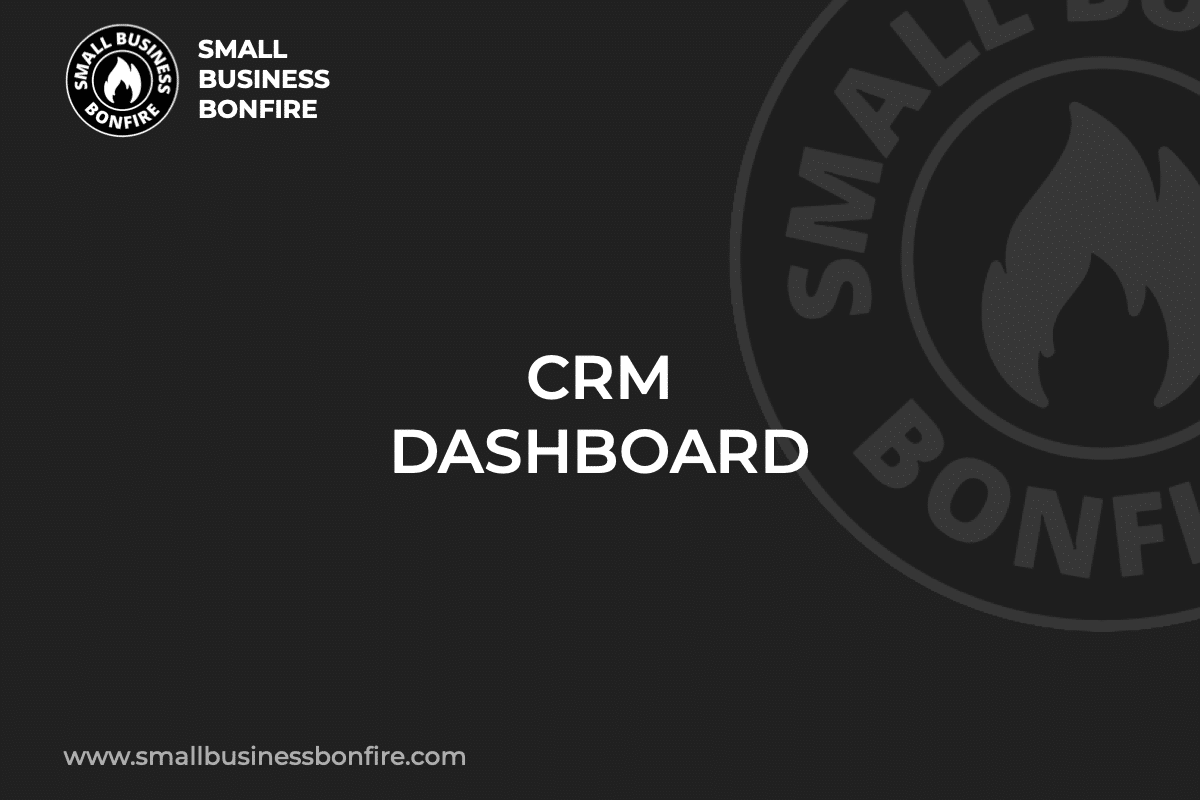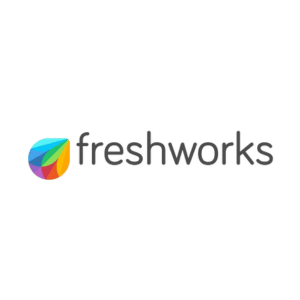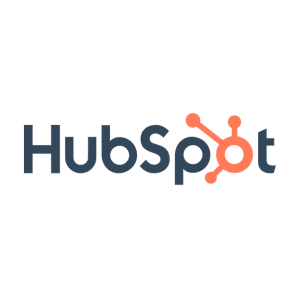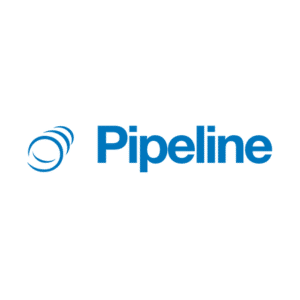Did you recently invest in CRM software? Do you understand how to use your CRM dashboard?
If you’re not using CRM dashboards to make data-driven decisions, you’re not using your software to the best of your ability.
My name is AJ. I relied heavily on the metrics CRM dashboards gave my business. And because I understood the information, I was able to scale and sell my business for multiple seven figures.
I’ve created this guide to help small business owners like yourself learn about CRM metrics and how to use their dashboards more effectively.
Still unsure how a CRM dashboard can boost your business? Let’s take a look!
Key Takeaways
- CRM dashboards present the most pertinent information first, helping everybody stay on the same page.
- CRM dashboards organize data loads, automatically send schedule and task reminders, and present essential goals.
- Meeting with your team ensures you organize your CRM dashboard properly and is easy to understand.
- One of the biggest mistakes you can make when creating a CRM dashboard is adding too much information, making the document hard to read and understand.
Related Reading: Best CRM for Small Businesses
SBB Featured Partners
What is a CRM Dashboard?
A CRM dashboard is a real-time system that displays and organizes data from your CRM software.
Also, these dashboards provide an overview of all activities related to customers, including the following:
- The sales lead your team focuses on
- Deals your team has acquired
- Key performance indicators
- Sales forecasts
A CRM dashboard presents vital information in graphs, images, and easy-to-understand figures rather than lengthy bodies of text.
Therefore, performance metrics are easy to understand and see.
CRM analytics on a dashboard are extremely helpful for your sales team. Sales reps can utilize CRM dashboards to do the following:
- See an overview of the sales funnel and its effectiveness
- Determine which tasks your team needs to complete
- View individual progress and tasks
When I used CRM dashboards regularly, my favorite feature was that they were customizable.
Because my team and I could customize each dashboard, we highlighted the key metrics our company needed to focus on first.
A CRM system isn’t complete without a comprehensive dashboard presenting essential information to all team members.
Types of CRM Software Dashboards
Did you know there are different options when building your customer relationship management dashboard?
In this section, I’ll review the most popular kinds of CRM dashboards so you can determine which one your business needs.
Also, keep in mind that your company may need to implement multiple dashboards, especially if you’re running a large-scale operation.
Sales Pipeline Dashboards
A sales pipeline dashboard is an easy-to-understand visual representation of your business’s sales pipeline.
These dashboards help you monitor and manage your sales prospects as they move throughout the buyer’s cycle.
Additionally, sales pipeline dashboards simplify creating a sales performance report because the software automatically does it.
Sales pipeline dashboards are essential if you notice sales dips because they identify weak spots.
Activity Report Dashboards
An activity report dashboard gives you an overview of your team’s performance regarding customer management activities.
You can quickly check in with each rep to see how many calls they’ve made, emails they’ve sent, and tasks they’ve completed.
These dashboards also allow you to view each customer record at a glance to prioritize tasks.
Revenue Forcast Dashboards
Revenue forecast dashboards make projections about future revenue based on real-time statistics.
These dashboards allow you to see which metrics most impact your revenue streams.
Also, you can see what outlets and employees are responsible for certain revenue streams.
Put simply, these dashboards break down business revenue so users can see the various factors driving revenue changes.
Goal Tracking Dashboards
Goal-tracking dashboards allow you to analyze your team’s performance over a set period.
These dashboards allow you to review individual and collective goals, customer activities, and team member productivity.
If you want to get detailed insight into how well your team is performing, consider implementing a goal-tracking dashboard.
Lastly, these dashboards make it easy to motivate your employees because they can see how far along they are from achieving a goal.
Your team can also see how their actions and task assignments impact the success of the goal in question.
Benefits of CRM Dashboards
You may be thinking, “Do I really need a CRM dashboard?” The answer to that question is simple: Yes!
CRM dashboards have numerous advantages when you and your team implement them correctly.
I’ll give you the top benefits I observed based on my experience using these dashboards within my company.
Increased Sales Team Accountability
CRM dashboards are an excellent way to hold your sales reps accountable for their assigned tasks.
The dashboards can present various information related to your sales team, including the following:
- Individual tasks
- Team sales performance
- Leads
- Each sales value
- Sales forecasting information
Because sales data and task assignments are presented clearly in the dashboard, your team members can see what needs to get done and what can wait.
If a sales rep falls behind on their workload, the dashboards present this information.
Dashboards are a great way to motivate your team to meet company sales performance and individual goals.
Streamlined Work Processes
A CRM dashboard also streamlines work processes, especially when you need to generate reports.
Dashboards make it easy to see what tasks and assignments your team must complete before moving on to the next project step.
Regarding the sales department, dashboards automate reports, saving time and energy throughout the company.
Rather than spend time going through your CRM system to find information to build a report, the technology does all the work for you.
Even if you only learn how to use CRM dashboard elements with the hopes of saving time, that is a wise investment!
Real-Time Updates
One of the best things about dashboards is that they update and change information in real time.
So, rather than work on goals with outdated numbers, you and your team can build your sales and marketing efforts based on up-to-date data.
It’s essential to understand that a CRM dashboard differs from a CRM report. CRM reports are static and present information from a certain point.
The information on dashboards constantly changes as your company works and conducts business.
Having up-to-date information simplifies identifying trends, seeing the sales process, and always understanding what’s going on in your company.
More robust Sales Processes & Tendencies
CRM dashboard software promotes more sales because the sales team’s work is given to them in the present tense.
While old reports are an excellent way to learn and grow, they aren’t helpful when your team needs to make real-time decisions about a current customer.
Dashboards clearly show the entire sales cycle and each customer’s stage within that cycle.
Your sales manager and reps can use this information to guide their decision-making, taking the guesswork out of the sales process.
Better Filtration of Data
Another benefit of CRM dashboards is that they automatically filter the data you need from those you don’t.
Analyzing every piece of company data gets overwhelming quickly (trust me, I’ve made this mistake).
Having a CRM dashboard do the hard work for you ensures you and your team only have the information you need in front of you at all times.
Also, remember you can customize your dashboard and constantly tweak it until you find the pieces of information you need regularly.
Improved Visual Design
The last advantage I’ll bring to your attention is that CRM dashboards are professionally designed to be visually appealing.
You don’t have to worry about getting confused about how to read a dashboard. The right CRM software presents this data clearly and concisely.
Dashboards present CRM data through charts, graphs, and other visuals, making it easy to keep track of trends.
A user-friendly CRM dashboard improves efficiency, removes confusion, and ensures everyone is on the same page.
What's Typically Included in a CRM Dashboard
Now that you understand why you must have a CRM dashboard, I’ll tell you what information your dashboard needs.
One mistake I’ve seen people make is adding too much information to their dashboards. A poorly designed CRM dashboard counteracts why you implement it in the first place.
Therefore, carefully consider the factors contributing to a well-designed CRM dashboard.
Sales Pipeline Information
Sales pipeline data is a must-have for your dashboard. Pipeline information shows you pending sales and their stage in the pipeline.
Further, this data should allow you to see the following pieces of information:
- Deals in progress
- Aging leads
- Lost deals
- Urgent needs
Most CRM systems present pipeline information as a set of horizontal lines with the value of the sale in progress.
Using real-time data, pipeline information can improve customer retention rates, conversion rates, and sales rep performance.
Newest Leads & Secured Deals
Other sales activity data you want on your dashboard are leads and closed deals.
CRMs automatically present lists of potential leads and deals your team members can pursue.
Also, CRM systems provide reminders and alerts for customers that need attention immediately, ensuring you convert more leads to sales.
Dashboards will show you when your team turned a prospect into a customer, updating sales forecasts in real time.
Lead and deal information helps your company in the following ways:
- Improves and makes lead generation more efficient
- Makes it easier to identify trends in the sales process
- It Simplifies finding future sales
- Sales representatives have updated information to work with
- Improves customer satisfaction
Sales Teams Recent Activities
Each sales rep on your team receives numerous phone calls, emails, and messages daily. As you can imagine, going through all this data without CRM is time-consuming.
Ensuring your dashboard displays updated sales rep progress, tasks completed, and other statistics helps you stay on top of everything happening.
Also, some CRMs allow you to view recent activities correlating with sales performance, social media engagement, and other interactions.
Viewing updated activity information ensures you know what’s happening within the sales cycle and your team members.
So, if someone’s slacking or there’s a gap in the sales pipeline, you can revise your strategy instantly rather than let the problem continue.
Urgent Tasks
This point may seem obvious, but having urgent tasks on CRM dashboards is vital.
Your dashboard should show everyone which tasks are pressing and when upcoming deadlines are approaching.
Without this information, it’s easy for things to fall through the cracks, resulting in poor customer satisfaction and company-wide confusion.
It also makes it easier to stray away from goals and project timelines.
CRMs allow you to enter recurring tasks and reminders for weekly meetings. Or, you can manually enter task reminders and deadline information.
KPIs (Key Performance Indicators)
Key performance indicators (KPIs) are the most essential information to include in your dashboard.
KPIs present the current values of the data you and your team care most about, helping you achieve business goals faster.
Customer relationships, sales, and company financial health can suffer if you don’t include KPIs in your CRM dashboard.
The most popular examples of KPIs include the following:
- Revenue growth
- More revenue per client
- Increased profit margin
- Better customer relations and retention rates
- Improved customer satisfaction
How To Create a CRM Dashboard
Next, I’ll explain how to create a CRM dashboard. Fortunately, the process is incredibly easy, as CRMs are designed with beginners in mind.
Step 1: Create New Dashboard
The first step is creating a new CRM dashboard. Look for a plus sign within your CRM.
Or review tutorials the company provides.
Typically, CRM systems make it easy to see where to add a new dashboard.
It’s also helpful to name your dashboard accordingly. Who will use it? The sales marketing department? Or the customer support team?
Keep the titles of your CRM dashboards simple so your team can locate them easily.
Step 2: Create Filtered Reports and Widgets
The next step is creating filtered reports and widgets.
Widgets are a type of graphical representation of data, such as charts, tables, and images. Reports show you the sales information you need to make decisions quickly.
You can customize your CRM dashboard with widgets displaying customer data, project progress, or other relevant details.
Ensure you auto-filter your most important reports to your dashboard. That way, your team can see the progress they’ve made.
Step 3: Arrange Visuals
The final step is arranging visuals and ensuring your CRM dashboard is pleasing to the eye.
Remember that you may not get it right the first time. I know my first dashboard took a few months to perfect!
It helps to take feedback from the employees using the dashboard most frequently and trying to fit the visuals to meet their expectations.
And if you don’t want to build a dashboard from scratch, most CRM systems have templates you can draw inspiration from.
Making their dashboards visually appealing is the hardest part for some business owners. Don’t get frustrated if it’s not the most efficient at first.
When you continually tweak your CRM dashboard, you ensure the right reports, information, and design are there.
CRM Dashboard Tips
Customer relationship management dashboards can get confusing if you don’t focus on the right aspects.
What common mistakes can you avoid? How do you know what to focus on? The list of questions is endless.
I’ve learned a lot throughout my years of creating CRM dashboards.
Here is a brief list of tips I wish someone had told me before creating my first CRM dashboard.
1: Focus on Important KPIs
Setting business goals is undoubtedly important, as they help you and your team stay focused and motivated.
However, there’s such a thing as placing too many KPIs on your dashboard.
Instead of cluttering your dashboard with too many goals, only include the most important and relevant KPIs.
For example, if your company needs to complete three big projects this month, those must be on the CRM dashboard, whereas long-term goals can sit on the back burner for now.
2: Include Sales Goals
Ensure your dashboard includes your team’s sales goals and updated progress of your progress.
Your dashboard should have information and business activities directly related to lead generation.
Performance metrics ensure everyone is pulling their weight and make it easy to see your company’s weak spots.
Also, prominently displaying sales goals helps motivate team members and indicates whether sales performance meets expectations.
3: Don’t Include Too Much Information
As I mentioned, putting too much information into CRM dashboards is a common mistake.
Adding too many data pieces makes the dashboard easy to understand and doesn’t showcase what tasks and goals are most important.
CRM dashboards make business practices more efficient and streamline communication and work tasks.
When there’s too much going on, employees are likely to stray away from using the dashboard (which is the last thing you want)!
It’s best to keep your dashboard as simple as possible and continually tweak it when you notice one section doesn’t need to be there.
4: Make Your Dashboard Easy to Understand
You’ll only experience the benefits of CRM dashboards if they are easy to understand by everyone in the company.
It’s helpful to use widgets in your dashboard, as they can make it simple for different departments to find the information they need.
Utilizing widgets and other dashboard customization techniques organizes the information on your dashboard.
One thing I did to make my CRM dashboards easy to understand was to conduct meetings with my team and get their input. Hearing what information employees regularly needed helped me design an efficient dashboard everybody loved using!
5: Break It Down by Department
Breaking down your dashboard by each department is a great way to ensure everyone in the company can see exactly what they need.
For example, you may have one section or widget for the marketing department and another for customer service personnel.
The idea here is that all departments should have different tasks and goals outlined on their dashboards, and they should be easy to find and keep track of.
By sectioning your dashboard off based on department, it makes it easier for people to stay on track and not lose sight of their goals.
Business managers can also quickly see each department’s progress, ensuring company-wide projects meet their deadlines.
Who Uses CRM Dashboards?
Who should use CRM dashboards to help business operations? Here, I’ll briefly explain the departments and groups of people that benefit most from using customer relationship management dashboards.
Small Business Owners
Small business owners have several things to keep track of, especially if their self-owned business isn’t their full-time job.
CRM dashboards ensure business owners stay organized and have a handle on everything going on within their company.
Also, the auto-generated task reminders and schedule updates help small business owners keep their priorities at the front of their focus.
Sales Managers
Sales managers utilize CRM reporting and dashboards to keep track of their employees and ensure the team meets their sales goals.
CRM dashboards show sales managers the length of a customer’s lifetime within the sales funnel. Therefore, managers can easily determine who or what areas are lacking.
Lastly, sales managers can view business processes, customer retention rates, and dashboard reports quickly and easily.
Sales Development Reps
Sales development reps use dashboard reports to keep track of personal goals and tasks and stay updated with long-term projects.
Additionally, sales development reps receive a clear picture of the entire customer lifecycle.
CRM dashboards help sales development reps stay organized and on top of their assigned tasks.
Account Executives
Account executives also find CRM dashboards useful. For example, account executives use dashboards for the following:
- Collecting data to manage a team’s goals better
- Making improvements on the sales pipeline
- Identifying trends
- Making predictions within customer segments
Executives thrive on the fact that dashboards present information in real-time. That way, they can make the best decisions to guide their teams.
Data Analysts
Data analysts also find CRM dashboards beneficial.
Data analysts use dashboard information to measure the success of campaigns, create forecasts, and analyze customer feedback.
CRM dashboards provide a more comprehensive view of overall performance and work towards gaining insights about customers.
Using CRM dashboards for data analysis gives businesses a better chance at meeting their goals because the data they need is organized better and easily accessible.
Marketing Managers
Lastly, sales marketing managers utilize CRM dashboards to see which campaigns work and which don’t.
Managers can then use this information to guide marketing teams in the right direction.
A CRM dashboard can also present valuable customer data that marketing managers use to make business decisions.
The better marketing departments understand your customer base’s needs and wants, the better they can target their message to match those needs.
CRM Dashboard Examples
CRM dashboard examples are an excellent way to see different structures and how each CRM system differentiates itself.
I chose CRM dashboard examples from some of my favorite CRMs in the industry.
If these aren’t right for your company, that’s okay. These examples can still serve as a great starting point!
Monday
One reason Monday is a popular customer relationship management software is that everything the company does simplifies business operations.
That said, it shouldn’t be surprising that Monday’s dashboard is about as simple and easy to understand as possible.
Monday designed its platform for beginners, making the dashboard easy for anyone to read and understand.
Still, Monday’s CRM dashboards include the following features:
- Real-time insights
- Dashboard customization
- Aesthetically pleasing visibility and alignment
- Resource management (adapt to changes and prioritize workloads)
- Over 50 widgets
I recommend Monday’s dashboard if you’re new to customer relationship management and data tracking.
Monday presents accurate data simply while offering customization.
See our full Monday Review here. P.S. It includes screenshots of the dashboard.
HubSpot
HubSpot has one of the cleanest CRM dashboards. With HubSpot, dashboards focus on the sales pipeline, providing an easy-to-read graphic to view company progress.
Additionally, HubSpot’s dashboards include several filters, allowing users to see sales changes over time.
The modern design and considerable white space make HubSpot dashboard easy to learn.
And if you want to base a CRM dashboard off HubSpot’s, it’s best to focus strongly on a short list of KPIs.
HubSpot’s dashboard design doesn’t work well for companies requiring several graphs and charts.
See our full HubSpot CRM Review (screenshots included).
Pipedrive
Pipedrive’s CRM dashboard is extremely comprehensive and best for business leaders focusing on sales performance.
The dashboard includes several charts and graphs, making it easy to see the following pieces of information:
- Year-to-date sales
- Deals won by product
- Deals won by source
- Deals won versus sales forecasts
- Deals won by sales rep
- Sales funnel conversion
Pipedrive’s dashboard also includes a sidebar where you can create and manage multiple dashboards, see your goals, and create and view CRM reports.
Although Pipedrive’s dashboard contains a lot of information, the system organizes it aesthetically pleasingly and makes it easy to understand things.
Checkout our Pipedrive Review here. It includes all the dashboards you’ll ever need!
The Bottom Line
CRM dashboards present the most pressing information going on within a company.
From individual sales rep performance to marketing campaigns, CRM dashboards provide detailed data in a way that is easy to understand and read.
You can customize your CRM dashboard or build one off a pre-designed template, just be sure not to overwhelm employees with too much information.
If you stick to the tips and tricks I presented throughout this article, your dashboard will be an efficient communication tool for everyone!
Is there anything we missed? If so, let us know in the comments section. And good luck building your CRM dashboard!
Newsletter Signup
Join The Leads Field Guide Newsletter for tips, strategies and (free) resources for growing your leads, and closing more deals.




